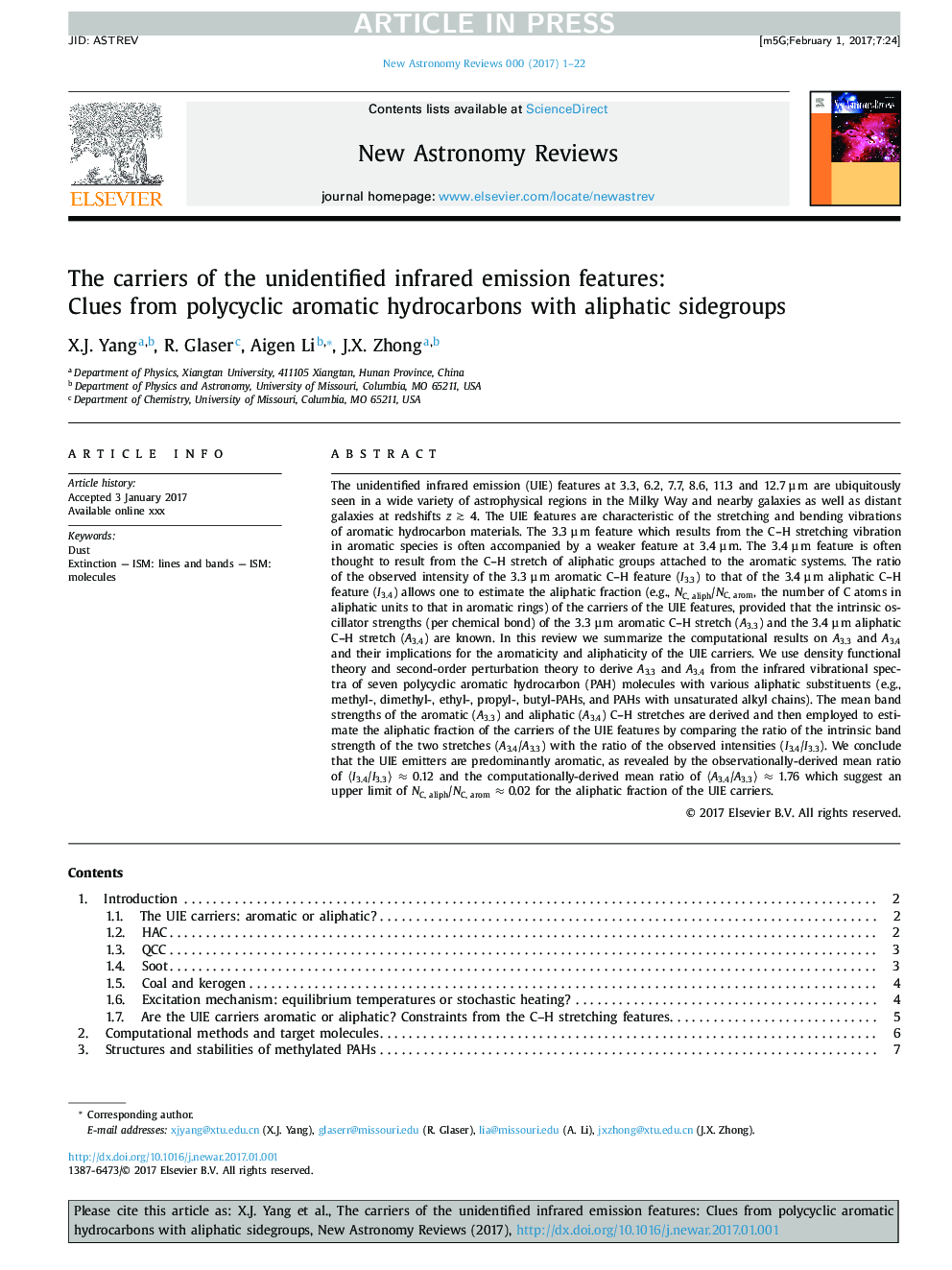| Article ID | Journal | Published Year | Pages | File Type |
|---|---|---|---|---|
| 5487851 | New Astronomy Reviews | 2017 | 22 Pages |
Abstract
The unidentified infrared emission (UIE) features at 3.3, 6.2, 7.7, 8.6, 11.3 and 12.7ââµâm are ubiquitously seen in a wide variety of astrophysical regions in the Milky Way and nearby galaxies as well as distant galaxies at redshifts z â³ 4. The UIE features are characteristic of the stretching and bending vibrations of aromatic hydrocarbon materials. The 3.3ââµâm feature which results from the C-H stretching vibration in aromatic species is often accompanied by a weaker feature at 3.4ââµâm. The 3.4ââµâm feature is often thought to result from the C-H stretch of aliphatic groups attached to the aromatic systems. The ratio of the observed intensity of the 3.3ââµâm aromatic C-H feature (I3.3) to that of the 3.4ââµâm aliphatic C-H feature (I3.4) allows one to estimate the aliphatic fraction (e.g., NC, aliph/NC, arom, the number of C atoms in aliphatic units to that in aromatic rings) of the carriers of the UIE features, provided that the intrinsic oscillator strengths (per chemical bond) of the 3.3ââµâm aromatic C-H stretch (A3.3) and the 3.4ââµâm aliphatic C-H stretch (A3.4) are known. In this review we summarize the computational results on A3.3 and A3.4 and their implications for the aromaticity and aliphaticity of the UIE carriers. We use density functional theory and second-order perturbation theory to derive A3.3 and A3.4 from the infrared vibrational spectra of seven polycyclic aromatic hydrocarbon (PAH) molecules with various aliphatic substituents (e.g., methyl-, dimethyl-, ethyl-, propyl-, butyl-PAHs, and PAHs with unsaturated alkyl chains). The mean band strengths of the aromatic (A3.3) and aliphatic (A3.4) C-H stretches are derived and then employed to estimate the aliphatic fraction of the carriers of the UIE features by comparing the ratio of the intrinsic band strength of the two stretches (A3.4/A3.3) with the ratio of the observed intensities (I3.4/I3.3). We conclude that the UIE emitters are predominantly aromatic, as revealed by the observationally-derived mean ratio of â¨I3.4/I3.3â© â 0.12 and the computationally-derived mean ratio of â¨A3.4/A3.3â© â 1.76 which suggest an upper limit of NC, aliph/NC, arom â 0.02 for the aliphatic fraction of the UIE carriers.
Keywords
Related Topics
Physical Sciences and Engineering
Physics and Astronomy
Astronomy and Astrophysics
Authors
X.J. Yang, R. Glaser, Aigen Li, J.X. Zhong,
